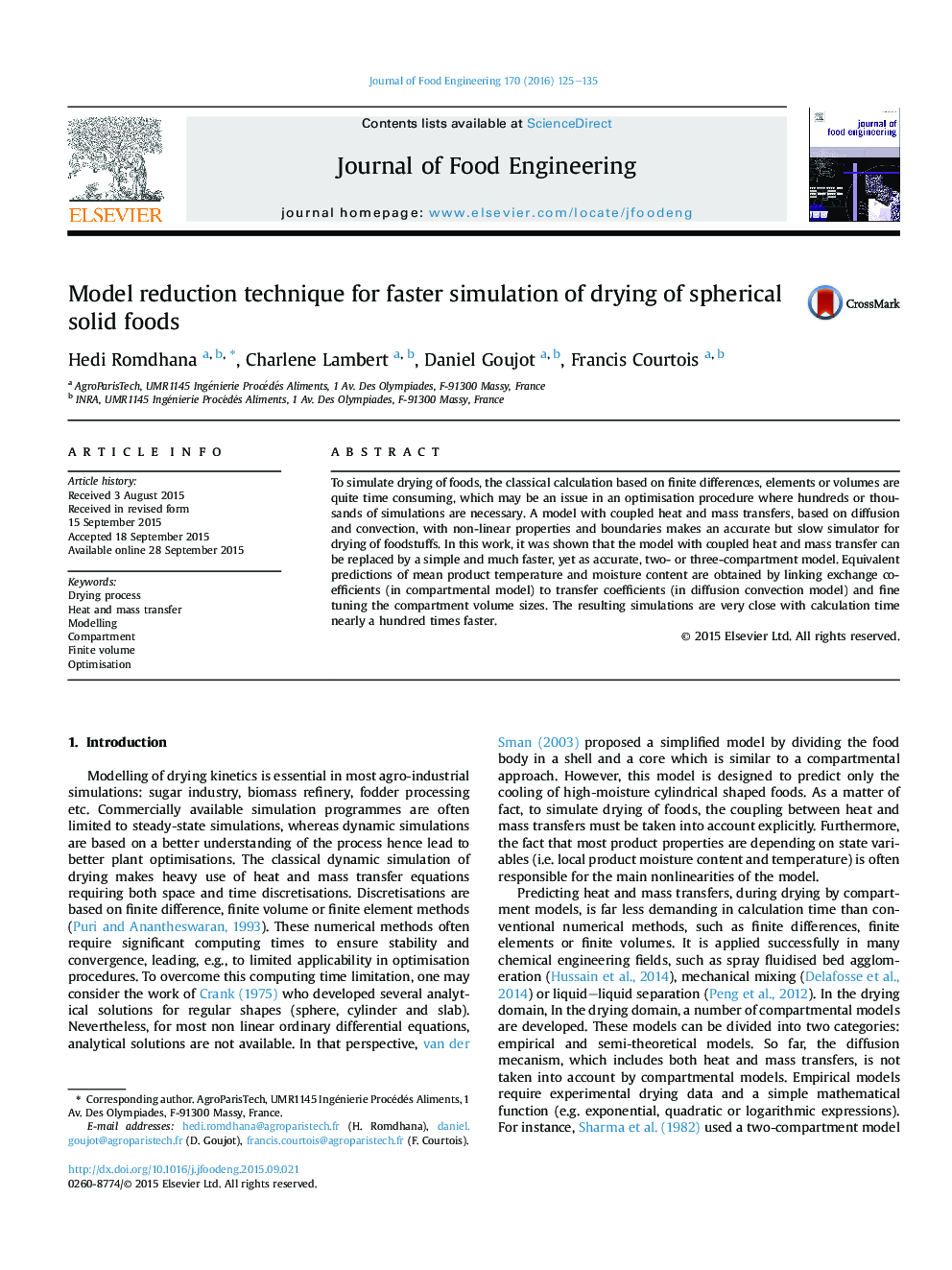| Article ID | Journal | Published Year | Pages | File Type |
|---|---|---|---|---|
| 222829 | Journal of Food Engineering | 2016 | 11 Pages |
•A simple technique to “shrink” a complete diffusion convection model for drying is proposed.•The model include: (1) heat and mass transfer, (2) nonlinearities both in the product properties and boundary condition.•The results obtained are in accordance with those obtained by conventional methods (e.g. finite volume method).•The calculation time nearly a hundred times faster than conventional methods.•The model is practical in flow-sheeting simulators requiring fast resolution of kinetic equations.
To simulate drying of foods, the classical calculation based on finite differences, elements or volumes are quite time consuming, which may be an issue in an optimisation procedure where hundreds or thousands of simulations are necessary. A model with coupled heat and mass transfers, based on diffusion and convection, with non-linear properties and boundaries makes an accurate but slow simulator for drying of foodstuffs. In this work, it was shown that the model with coupled heat and mass transfer can be replaced by a simple and much faster, yet as accurate, two- or three-compartment model. Equivalent predictions of mean product temperature and moisture content are obtained by linking exchange coefficients (in compartmental model) to transfer coefficients (in diffusion convection model) and fine tuning the compartment volume sizes. The resulting simulations are very close with calculation time nearly a hundred times faster.
